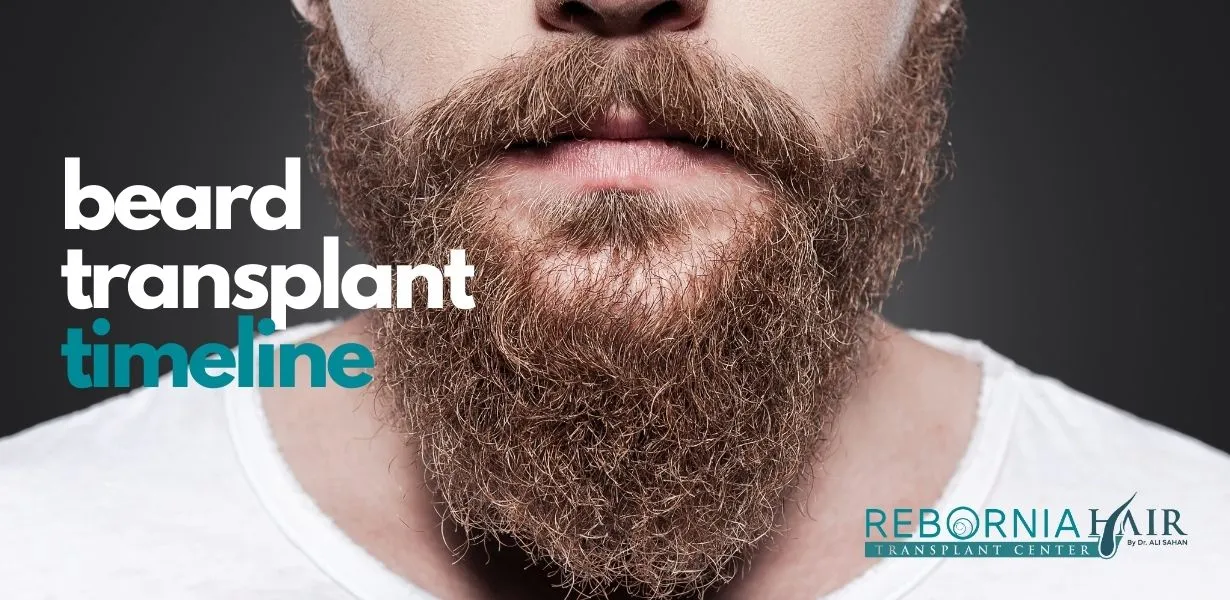

Dreaming of a full, thick beard but frustrated with patchy growth? A beard transplant can give you the facial hair you’ve always wanted. If you’re considering this procedure, you’re likely curious about the timeline: how long it takes to see results, what recovery is like, and the potential risks involved. Here, we’ll walk you through the entire beard transplant timeline so you know exactly what to expect at each stage of the journey.

A beard transplant, like any other hair transplant, requires patience. You’ll see significant progress over the first year, with changes happening at different stages. Let's dive into each phase so you can track your progress post-transplant.
Right after the procedure, your beard area will look swollen and might feel tender. Redness and small scabs are common around each transplanted graft site. This is normal and expected. You’ll want to avoid touching or washing your face immediately, as the grafts are fragile and need time to settle in. You might also experience minor discomfort, but this can usually be managed with prescribed pain relievers.
During the first week, you’ll notice some scabbing around the grafted hair follicles. These scabs will typically fall off on their own after a few days. At this stage, gentle face washing is allowed, but be sure to follow the aftercare instructions provided by your surgeon. It’s best to avoid strenuous activities, as excessive sweating can affect the healing process. Sleeping with your head elevated may also help reduce swelling.
At this point, most of the visible scabs and redness should have subsided. You’ll start to see your new beard forming, although it’s still early in the process. The grafts should now be more stable, so you can resume most normal activities. However, continue to avoid scratching the area, as this could dislodge the transplanted follicles.
During this period, you may notice what’s called “shock loss,” where the transplanted hair falls out. This can be a bit alarming, but it’s completely normal! Shock loss happens because the follicles are adjusting to their new location. Don’t worry—the roots are still intact, and new, permanent hair will start to grow in a few months. By the end of this period, around 10-30% of the new beard growth should be visible.
Around the four-month mark, you’ll start to see substantial new growth. At this point, your beard should be thicker, and you’ll have a clearer picture of the final result. Your transplanted hair will continue to grow, filling in any patchy areas and blending with your natural beard. By the eighth month, you should see around 50-70% of the final result.
Congratulations! You’ve reached the final stage of your beard transplant timeline. By now, 90-100% of the transplanted hair should be fully grown, giving you a thick, natural-looking beard. At this point, you can treat your beard just like your natural facial hair—shaving, trimming, and styling however you like. The results are permanent, so you can enjoy your new beard with confidence.
As with any cosmetic procedure, a beard transplant has some potential risks. Here’s what you should keep in mind:
FUT Scarring: If you had the FUT method for your transplant, you may have a linear scar at the donor area. However, most surgeons today use advanced techniques to minimize scarring.
Shock Hair Loss: As mentioned, shock loss can occur within the first few weeks after surgery. While it’s temporary, it’s essential to be prepared for it.
Infection: While rare, infections can occur if aftercare instructions aren’t followed properly. Keep the area clean, avoid touching your face, and contact your surgeon if you notice signs of infection like swelling, redness, or pus.
Proper aftercare is crucial to help your new beard grow healthy and strong. Here are some tips to ensure the best results:
At Rebornia Hair Clinic, we understand how important a full beard can be for your confidence and style. With our team of skilled surgeons and state-of-the-art technology, we provide top-quality beard transplants with a focus on natural results. Here’s what sets us apart:
See. Hair Transplant Turkey: 2025 Guide
If you're considering a beard transplant, don’t wait any longer to make your beard dreams a reality! Schedule a free consultation with us at Rebornia Hair Clinic and let our team guide you through the process. We’re here to answer all your questions and help you gain the full, lush beard you deserve.
Will my beard transplant result look natural?
Yes, beard transplants are designed to look natural. The surgeon carefully matches the transplanted hair’s angle and growth pattern with your natural beard. By the end of the growth period, your beard should blend seamlessly.
How soon can I go to work after getting a beard transplant?
Most patients return to work within 1-2 days if they’re comfortable with minor redness and swelling. However, if you want all visible signs to fade first, waiting about a week is ideal.
Won’t shaving damage my new beard grafts?
No, you can safely shave your beard after the transplanted hairs have fully taken root, usually about 10-14 days post-surgery. Your clinic will advise you on when it’s safe to start shaving.
When will my beard area stop itching after my facial hair restoration?
Itching is common for the first couple of weeks. You can soothe it with gentle moisturizers or prescribed creams from your clinic.
Can Minoxidil help my beard hair grow faster after my transplant?
Minoxidil can potentially speed up growth for some people. However, always consult your clinic before using it, as they can guide you on its safety and efficacy for your beard transplant.